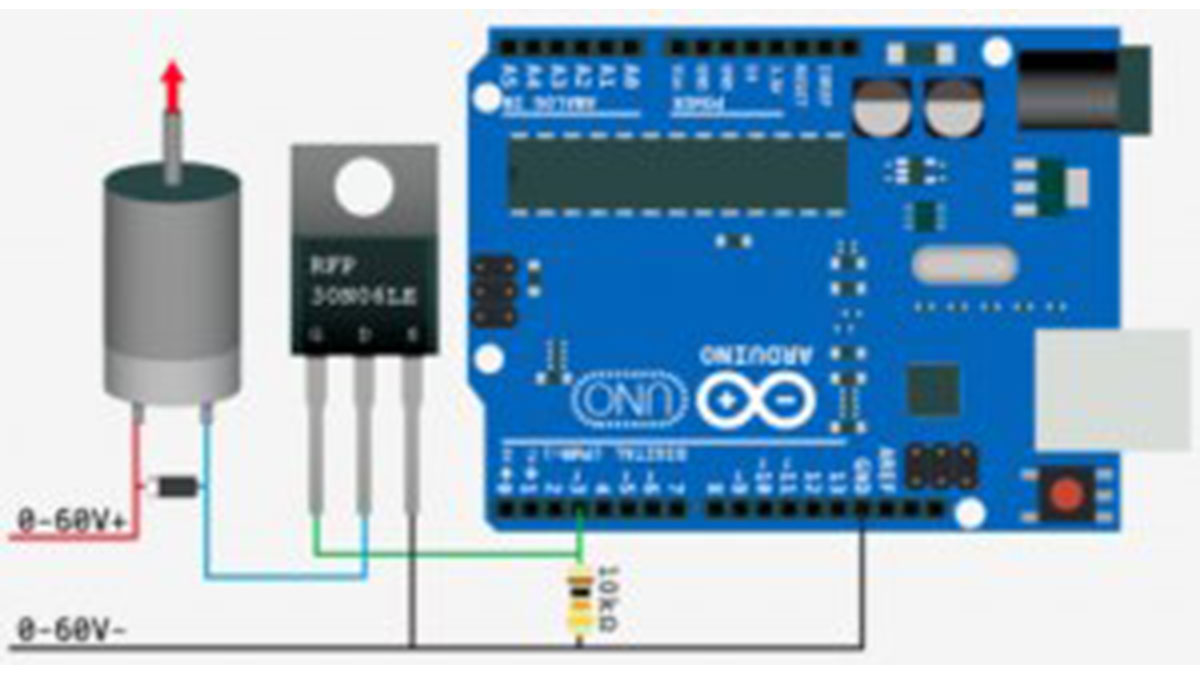Summary of High-Power Control: Arduino + N-Channel MOSFET
This article explains how to control 12V devices like solenoids, motors, or lights using an Arduino and an N-Channel MOSFET (specifically the RFP30N06LE). It simplifies how the MOSFET acts as a switch controlled by a gate signal from the Arduino, enabling current flow through the connected device. The article emphasizes using a pull-down resistor to keep the MOSFET off by default and a diode to protect against voltage spikes from inductive loads. Instructions to 3D print a casing and best wiring practices for safety are also discussed.
Parts used in the Arduino N-Channel MOSFET Control Project:
- Arduino (e.g., Arduino or ESP32)
- 12V motor, solenoid, or light
- N-Channel MOSFET (RFP30N06LE or equivalent)
- Pull-down resistor
- Rectifier diode (1N4001 or SB560)
- Heat shrink tubing
- Insulation tape
- 3D printed enclosure (two-part STL files)
- Optional: Optoisolator for extra protection
Eventually you are going to find yourself holding a 12v solenoid, motor, or light and wondering “How the heck am I supposed to control this from my Arduino?” And we have covered this in the past. Today we are going to talk about another way of doing just that, this time with an N-Channel MOSFET metal–oxide–semiconductor field-effect transistor, specifically the RFP30N06LE MOSFET (You can pick these up from sparkfun). but you can use any N-Channel MOSFET exactly the same way.
How this works
Once the code is uploaded to the ESP32, you can start building the project by using a 3D printer to create a casing for the system. The enclosure’s STL files have been shared, comprising two parts that can be assembled together.
Kindly adhere to the provided instructions in order to properly arrange all the parts for a tidy and snug placement. Using precautions such as heat shrink tubing and insulation tape is recommended to ensure proper insulation and prevent possible short circuits. WARNING: I am going to make this really simple, so pay attention… my aim is to explain in easy terms what is happening.
To begin with, a MOSFET is simply a unique type of transistor.
If you are unfamiliar with transistors, they are components with three leads that serve two basic functions: switching and amplifying (in this case, it is configured as a switch). You have an Input labelled the Source, an Output called the Drain, and a Control named the Gate. Sending a HIGH signal to the gate causes the transistor to switch, enabling current to move from the source to the drain.
Therefore, we connect our motor, solenoid, or light to the V+ terminal rather than the ground (V-) terminal. The ground is linked to the drain of the transistor. By sending a HIGH signal to the transistor’s gate, the arduino activates the transistor, allowing current to flow between the drain and source, and forming a complete circuit for the motor, solenoid, or light.
More Information
If you want to know more, or actually know what is actually going on in there. Pete over at Sparkfun put out amazing video explaining MOSFETs for a solid 20min. Highly recommended.
Hooking it up / What’s the diode used for?
This circuit is pretty simple. The only part that looks funny is the resistor. This is a pull-down resistor. The resistor holds the gate low when the arduino does not send a high signal. This is here incase the arduino comes loose, or the wiring is bad it will default to off. You don’t want this pin to ever be floating as it will trigger on and off.
You can see that in 2 of the 3 illustrations, there is a diode parallel to the device we are powering. Any time you are powering a device with a coil, such as a relay, solenoid, or motor, you need this guy, and don’t leave home without it. What happens is when you stop powering the coil, a reverse voltage, up to several hundred volts, spikes back. This only lasts a few microseconds, but it is enough to kill our MOSFET. So this diode (only allows current to pass one way) is normally facing the wrong direction and does nothing. But when that voltage spikes comes flowing the opposite direction, the diode allows it to flow back to the coil and not the transistor. We will need a diode fast enough to react to the kickback, and strong enough to take the load. A rectifier diode like the 1N4001 or SB560 should do the job. If you are looking for extra protection you could use an optoisolator between the Arduino and the transistor. An optoisolator optically isolates both sides (high and low power) of the circuit so the high-voltage can not possibly come back to the microcontroller.
For more detail: High-Power Control: Arduino + N-Channel MOSFET
